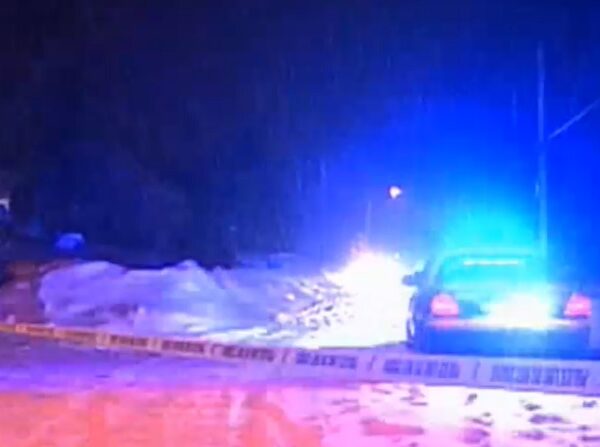
By Steve Pomper
The NPA covers many issues that threaten the safety and effectiveness of law enforcement agencies and officers. The NPA has reported on and assisted officers wrongly accused of policy violations and even of breaking the law when evidence shows they were doing their jobs. The NPA also challenges legislatures that pass anti-cop laws and prosecutors who fail to prosecute criminals but are all too eager to railroad innocent cops.
An article reprinted in Police1.com from the Xiphos newsletter raises one of these threats. It’s written by Xiphos editor, Ken Wallentine, also chief of the West Jordan P.D. in Utah. He wrote about an appellate court opining on the “state-created danger” doctrine. The specific case involved a deadly landlord-tenant dispute. The court issued an opinion about whether the officer involved in the case “should be liable.”
Chief Wallentine says the “conundrum that may lurk behind a claim of ‘state-created danger.’ The… doctrine allows an officer to be held liable for injuries or deaths that occur because of a danger the officer ‘created’ by an act or failure to act when the officer knew or should have known [the] action or non-action would bring obvious danger and harm to a person.”
Wallentine says “the Supreme Court left two paths open to sue government officials….” The first involves officers taking a person into custody (arrest or protective), after which harm follows from which the officers could be liable.
The hitch comes with the second path. Welch V. City of Biddeford Police Department, 2021 WL 3828367 (1st Cir. 2021) involved an officer’s alleged failure to act. Hindsight, being clear, this seems a situation where an officer is trying to be the least invasive in an apparent civil dispute fraught with emotional hyperbole. In most cases like this, no violence would result. Unfortunately, this was the anomaly.
Officers were dispatched to a driveway parking dispute between a landlord and tenants. Upon learning the facts of the incident revealed this to be a civil dispute, one officer cleared the other officer.
Aside from the parking complaint, the tenants told the remaining officer the landlord, James Pak, who also lives on the property, said he had a gun and had made death threats against them.
The officer spoke with Pak, sympathized with his situation (likely to help calm him), and told him the matter was a civil dispute and warned him against making death threats. Pak again became upset, raised his voice, and accused the officer of not understanding his situation.
The officer emphasized to Pak the parking dispute was civil, so he was going to leave. Then, before he left, the officer told the tenants to stay away from Pak.
Tragically, Pak did have a gun and retrieved it after the officer had left. Pak then went to the tenant’s apartment, shot one female tenant twice, wounding her, and “then fatally shot” the other two tenants.
When looking at this case with hindsight, it’s easy to criticize the officer for not doing more (and maybe he or she should have). But without being at the scene and perceiving all the nuances that the officer had, it’s hard to know for sure he’s culpable.
It’s kind of like an angry kid on the playground who yells at another kid, “I’m gonna kill you!” That’s not likely. Well, some adults occasionally say the same thing, but almost none carry out these threats.
I’m not arguing how bad it looks in retrospect. We all wish we had that crystal ball that could show us the unknowable. Should the officer have arrested Pak for making death threats? Maybe. Again, I wasn’t there, but I remember similar situations where I was there. And, for a landlord who behaves as Pak reportedly did, it’s likely not his first landlord-tenant tirade. Yet, the tenants were still alive.
I can’t say that’s what happened, but this is part of how officers routinely filter their decisions. And the reality is people often lie or exaggerate. Were the tenants embellishing what the landlord had said to make him look worse? In this case, maybe not, but it’s also part of an officer’s assessment.
In the end, the appellate court ruled plaintiffs could make a valid claim under the state-created danger doctrine if they could show four elements occurred, essentially:
- The officer acted to create or enhance a danger to the plaintiff;
- The created or enhanced danger was specific to the plaintiff and distinct from the general public;
- The act caused the plaintiff harm; and
- The officer’s conduct, when viewed in total, shocks the conscience.
A judge who dissented said, “‘state-created danger’ exception only works if what the officer did, other than failing to arrest Pak, is ‘so egregious, so outrageous, that it may fairly be said to shock the contemporary conscience’”
The dissenting judge “opined that no matter what one thinks of the officer’s action, the officer ‘took no affirmative act that could conceivably be said to shock the conscience as that standard is defined in Lewis.’”
Chief Wallentine says the case will return to the trial court and will probably make a return trip to the appellate court. The chief advises officers, “While doing nothing can be an important de-escalation tactic, officers must also carefully consider whether their actions or omissions will put the complaining party in a worse situation than before.”